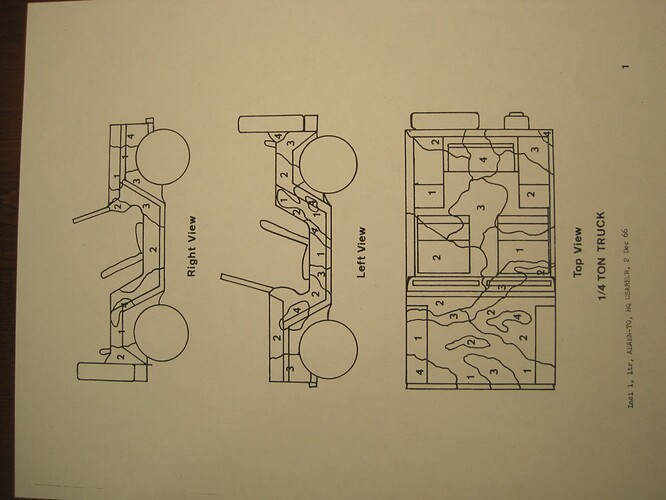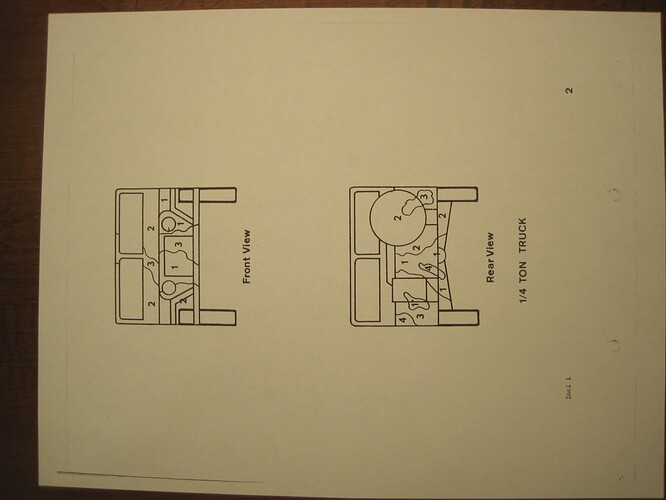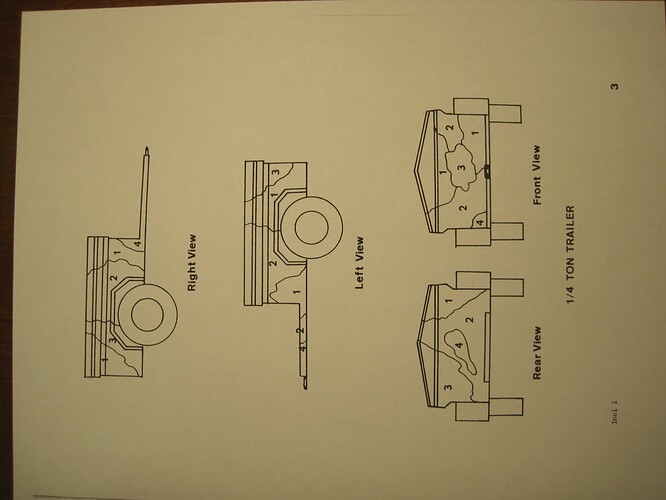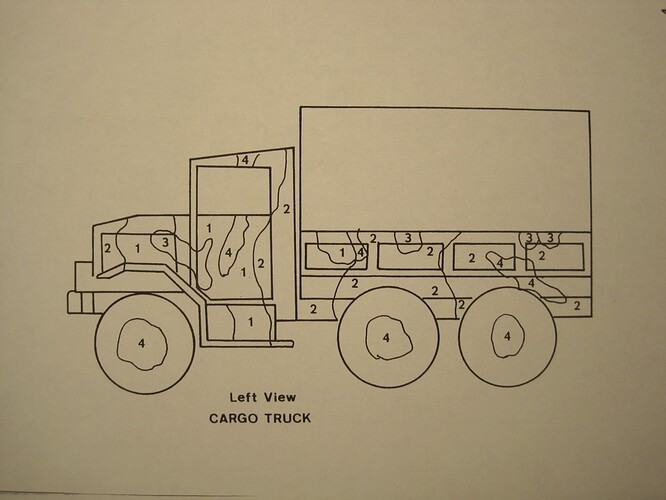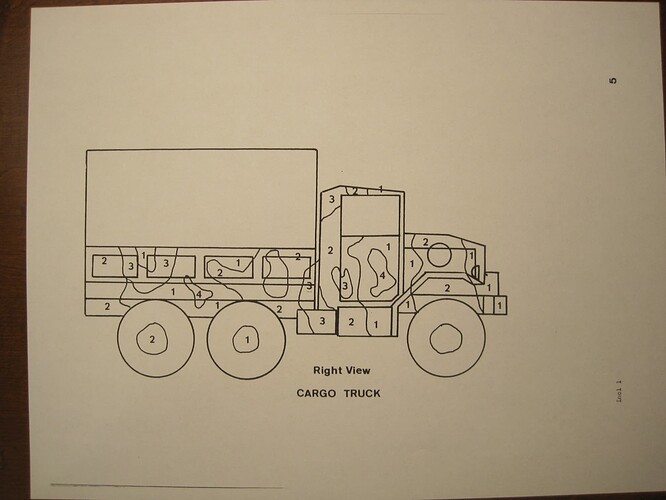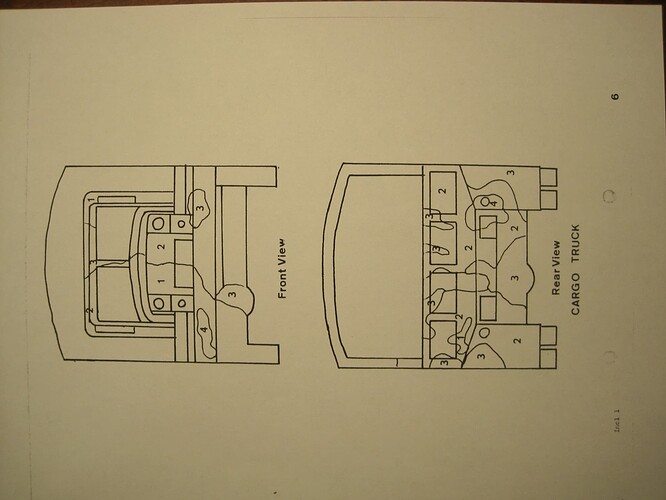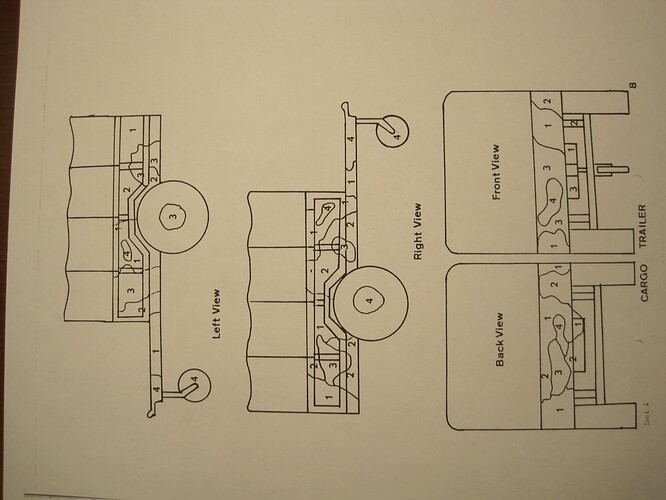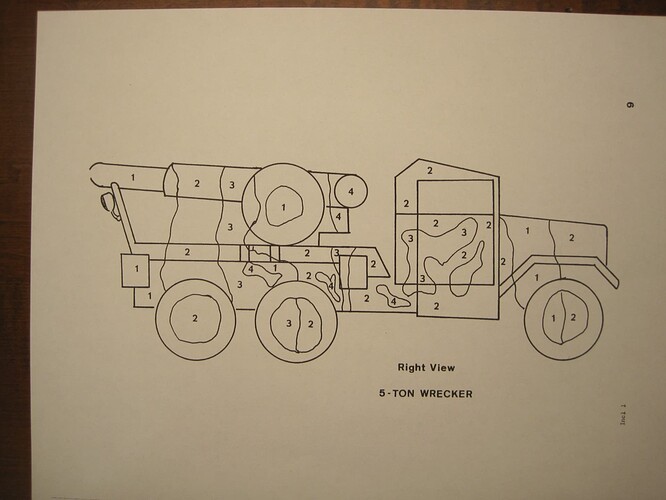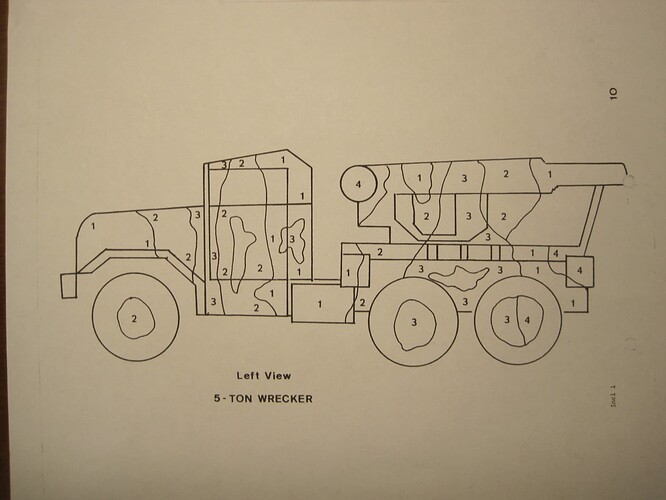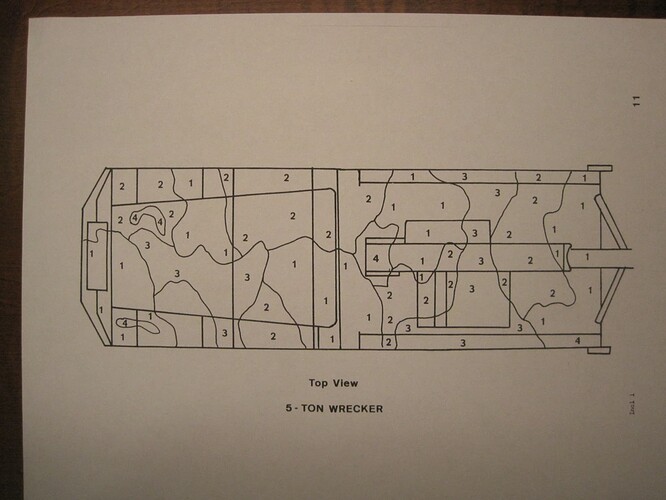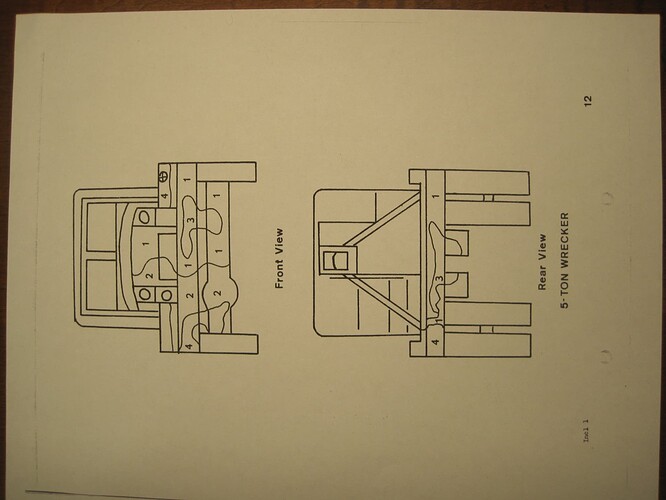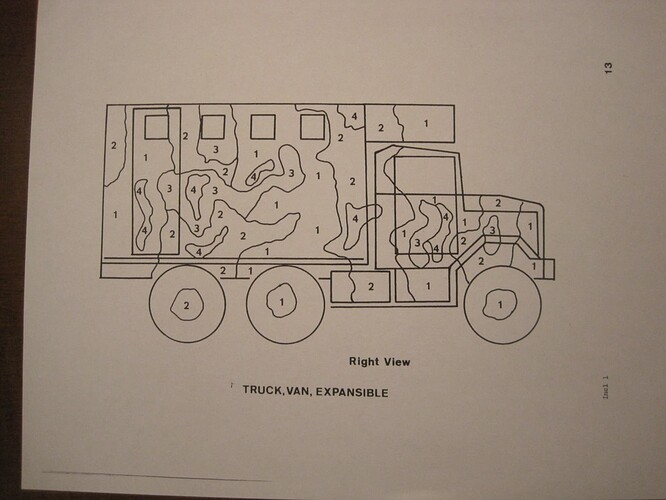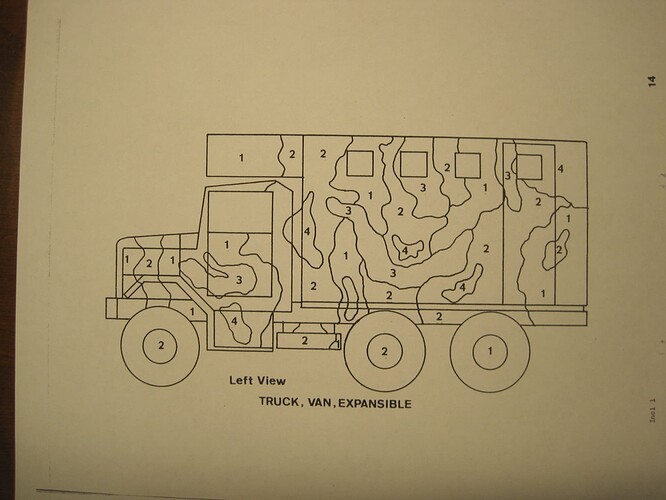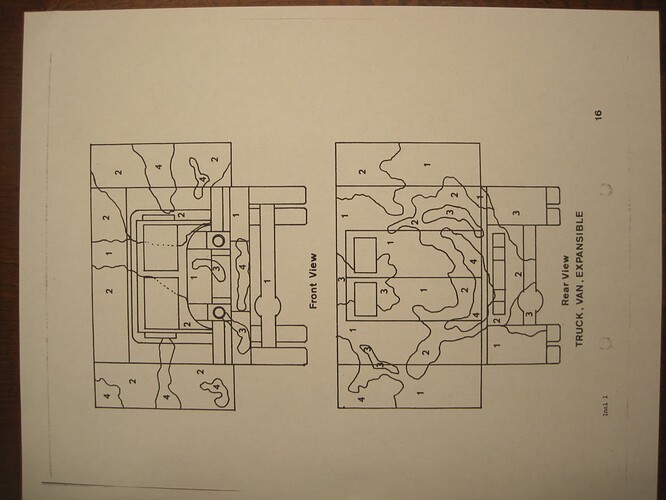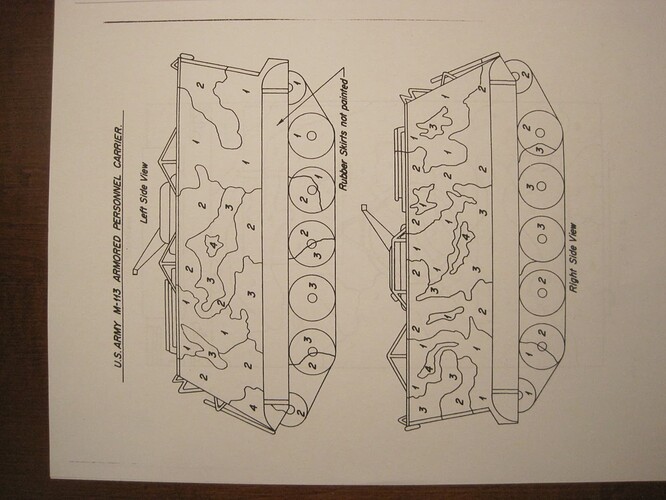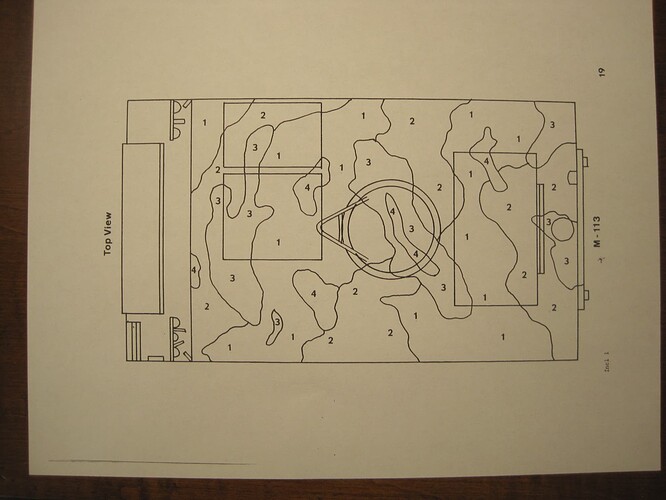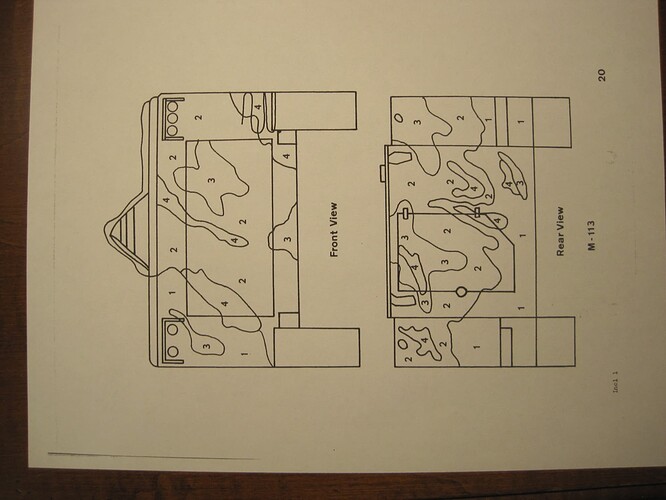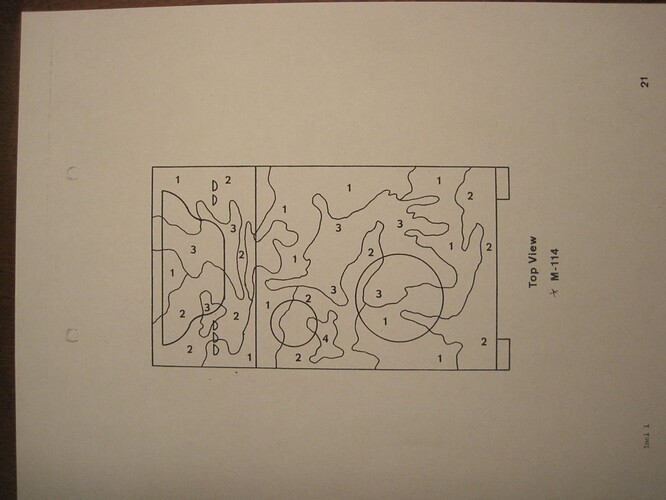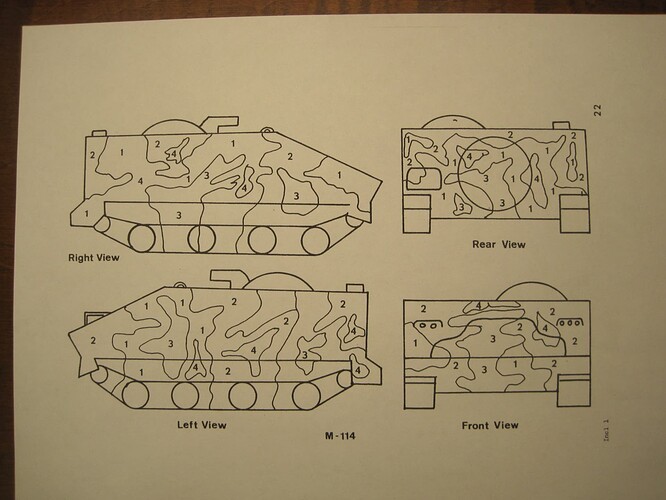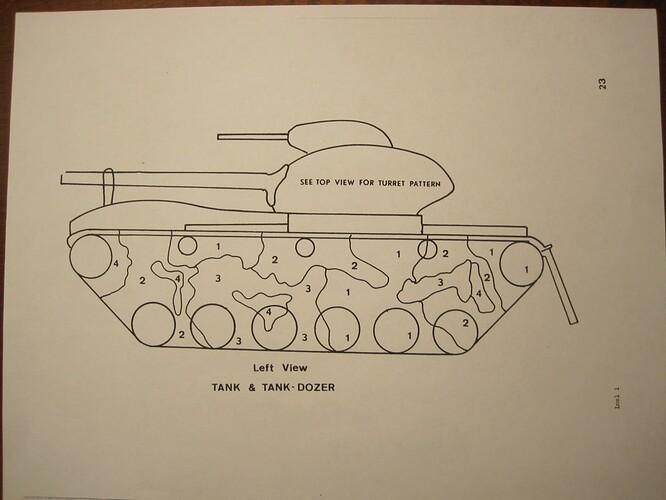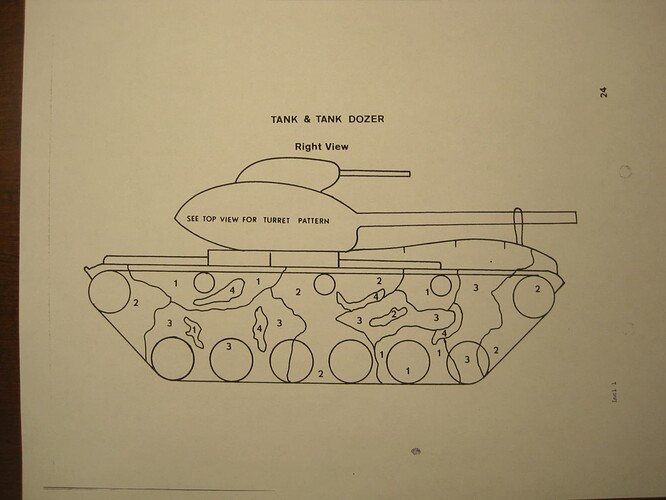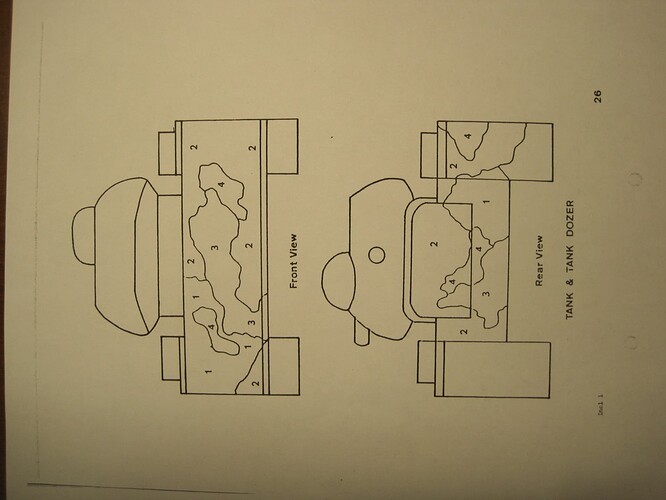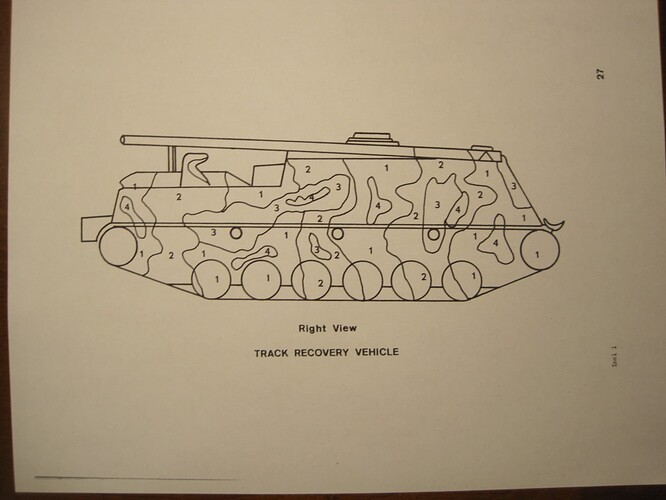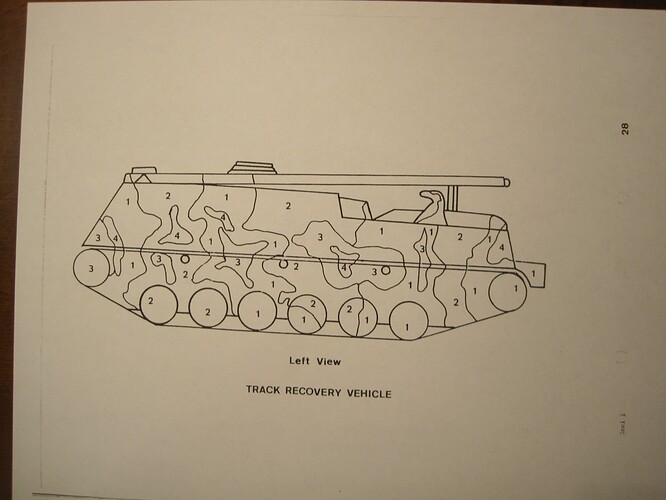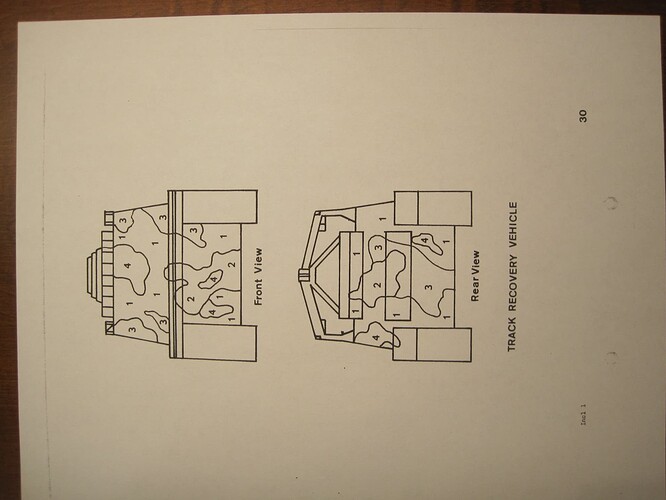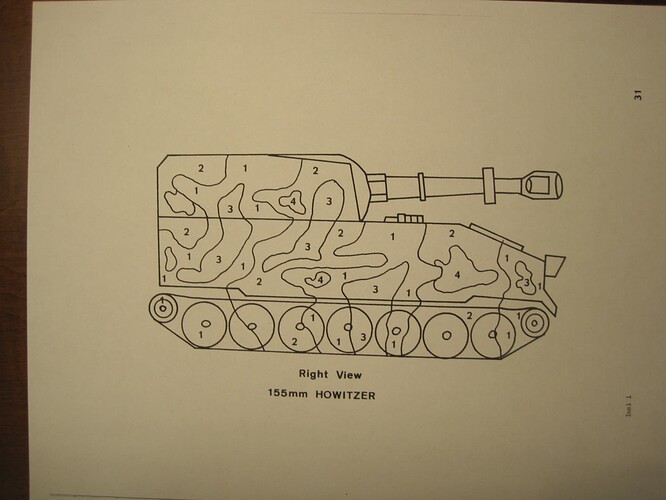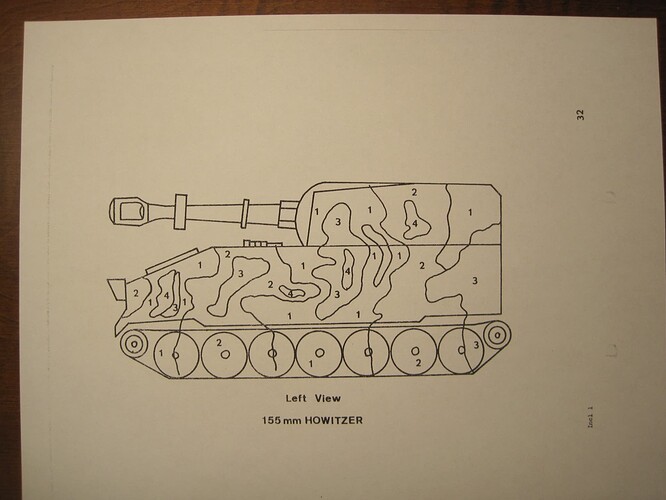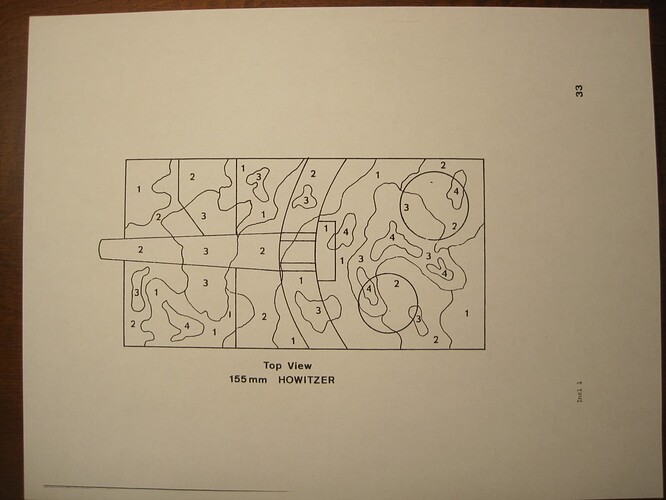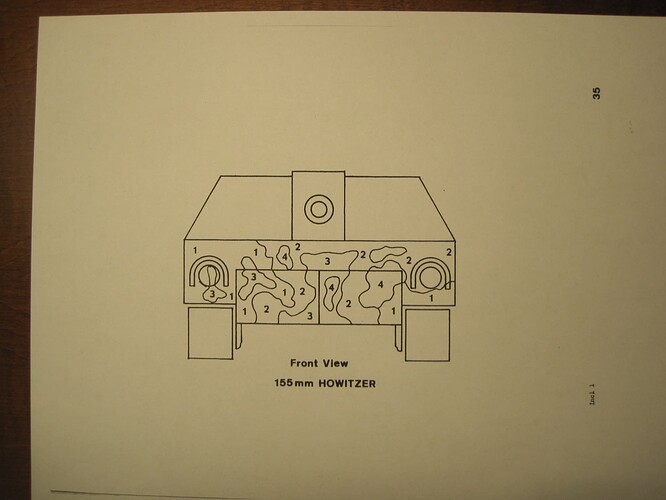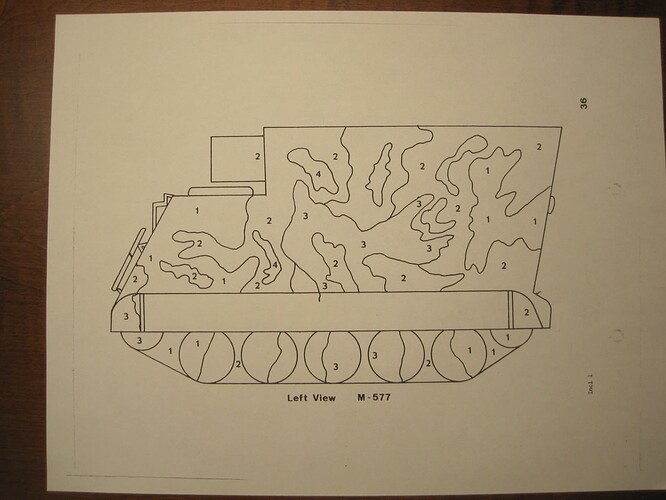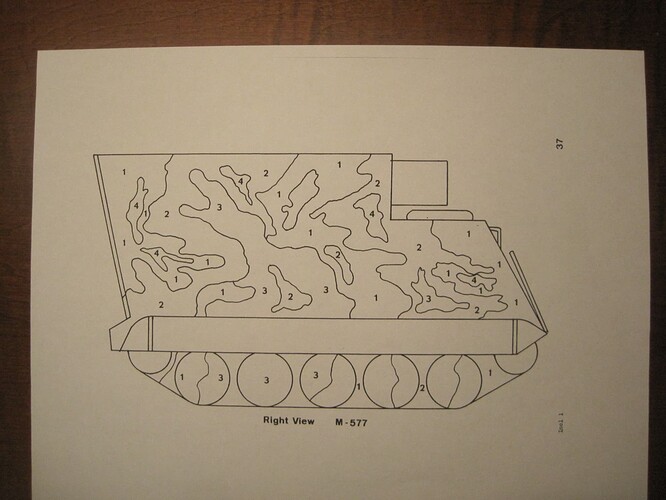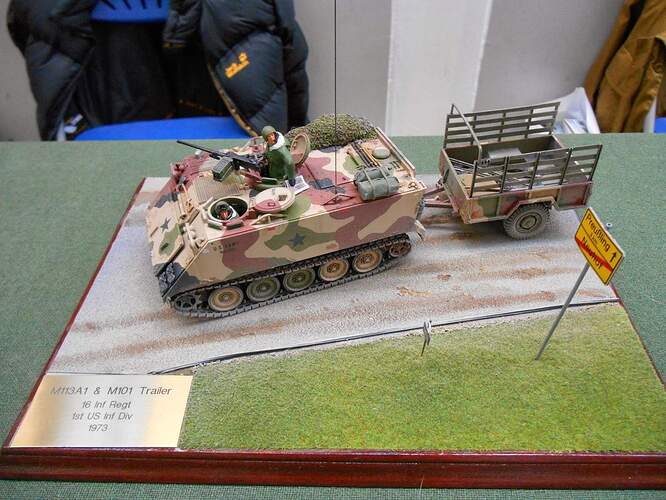Based on a request by Andreas Kirchhoff, I’m posting the entire set of MASSTER pattern templates. I may have already posted all of them in another posting, but here they are again.
He specifically asked if there was a pattern for the M551, and there is a good reason why the answer is “Sadly, no.” (There’s no Gama Goat either).
And the reason is that these drawings were originally created to support a previous plan to pattern paint vehicles that began in 1966 and through a funny chain of events, were originally created in December of 1966, The program they were intended to support was put on a temporary hold and then cancelled in June of 1967, The drawings then just sat in some file cabinet in the USAREUR Chief Engineer’s office until 1973 when the decision to implement MASSTER was made. They made a couple of changes to which color went with which “number”, but pulled the old drawings out of the file cabinet and re-issued them. And of course the reason they didn’t include either an M551 or a Gama Goat, both of which were all over the place in 1973 is because neither of those vehicles was in the European Theater in 1966.
Here are the drawings which were created in 1966 and re-issued to the field in 1973 to implement the MASSTER paint scheme in USAREUR.
And remember, these were hand done by THOUSANDS of G.I.s in the motor pool by using these pictures to draw an outline in chalk by hand on the vehicle and then hand painting with a brush, so if anybody tries to tell you that YOUR model isn’t “perfect”, that’s just wrong, because there IS no “perfect”!
